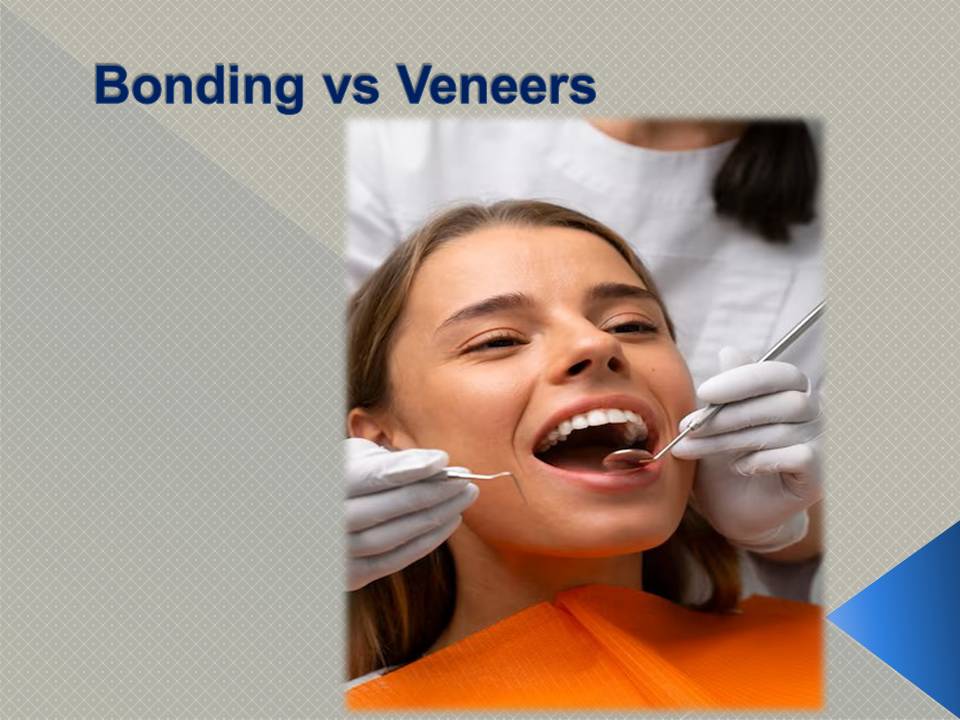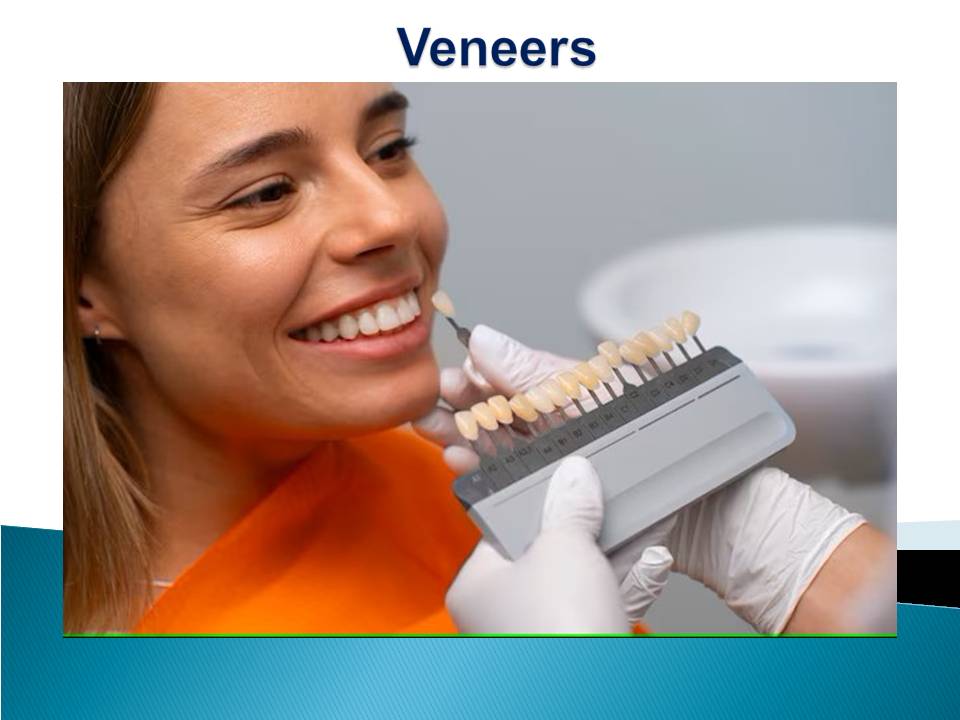Wouldn't you like to have teeth that shine like pearls and a beautiful smile?

Maybe you have a few problems with your teeth, and while solving these problems, you want to have the necessary things done for an ideal smile design. Maybe there is no problem with your teeth; you are just curious about what needs to be done to design your teeth according to your face.
Now, we will both give information about and compare two of the applications (Bonding and Veneers) that are made to treat not very large-scale problems in your teeth and to have an ideal smile design.
Composite Bonding
Bonding is a type of resin application to the tooth surface in dental aesthetics and restorative dental treatment.Bonding may be utilised for any of the subsequent conditions:
- Stained and discolored teeth
- Structural problems in the teeth (gaps between teeth, broken or cracked teeth, crooked teeth, short teeth)
- Tooth decay
- Aesthetic repairs and reconstructions
Bonding material:
The bonding material is a tooth-colored filling material called composite resin. Composite resin is a mixture of organic polymers. Its durability is increased by adding quartz or silica particles. After being applied to the tooth, it is hardened with a special ultraviolet light or laser. Thus, it quickly takes shape and adheres firmly to the tooth surface.

Types of bonding applications
The types of bonding treatments are classified according to the application of the material used to improve dental problems or for aesthetic needs. The common goal in both applications is to restore the function of the teeth and meet aesthetic needs by making their appearance more attractive.
Direct composite bonding:
Direct bonding is a type of bonding where the composite resin is applied directly to the tooth. It can be completed in one session.
The dentist cleans the patient's teeth and roughens the outer surfaces for stronger adhesion with the composite resin. The composite resin is then applied to the teeth in layers, hardened with a special ultraviolet light or laser, and adhered to the tooth. The bonded tooth is then polished.
Indirect bonding:
It is used to solve a problem that cannot be solved by direct bonding. Two sessions are required for this application.
In the first session, molds of the teeth to be applied are taken, and the resin is prepared in the laboratory environment. In the second session, the composite resin prepared specially for the patient is thoroughly hardened with a special ultraviolet light or laser and adhered to the tooth. The bonded tooth is then polished.
Advantages and Benefits of Composite Bonding
Necessitates minimal intervention on the dental surface:
Bonding does not necessitate the taking out or replacement of substantial quantities of tooth enamel. Consequently, a significant portion of the natural tooth is retained.
Fast and easy to apply:
Each tooth can typically undergo direct bonding in 30-60 minutes. Indirect bonding, on the other hand, takes a maximum of one week, including the initial examination and impression-taking, the laboratory phase, and the application in the second session.
Cost is lower:
It is generally more affordable than procedures such as veneers or crowns.
Reversibility:
The bonding method necessitates minimal intervention on the tooth enamel, allowing for reversal and preservation of the tooth's original structure.
It can be applied to many dental problems:
It provides a flexible solution for various dental issues, including structural dental problems and aesthetic operations.

Veneers
Veneers are a durable, natural-looking, stain-resistant, thin veneer applied to the front surface of the tooth and are widely used to address aesthetic concerns. Thin shells specially made to fit the front surface of the tooth. It improves the visual attractiveness of teeth with minimum modifications to the enamel.

Upon the determination to apply veneers, the requisite tooth enamel is removed. Subsequently, the dimensions of the tooth designated for veneering are recorded, and the laboratory procedure commences. The laboratory-prepared veneer is subsequently bonded to the tooth.
Dental veneers material
Veneers are made from several materials, including porcelain, composite resins, and ceramic, to correspond with the natural colour of your teeth.
Areas of dental veneer use
Veneers may be preferred to eliminate the dental problems listed below.
- Dental deformities.
- Gaps between teeth.
- Cracked or fractured teeth.
- Alignment problems in teeth.
- Discolouration of dental enamel.
- Aesthetic concerns.
8 types types of dental veneers
1. Porcelain veneers:
Porcelain veneers are stain-resistant, resist wear and tear, and have a long service life.
2. Kompozit veneers:
The main element is resin, which is applied directly to the teeth in layers, subsequently shaped and polished by the dentist.
3. Zirconium Veneers:
Zirconia ceramics are produced by amalgamating zirconium dioxide with oxygen in specialised furnaces. They are resistant to breakage, cracking, and abrasion.

4. Emax Veneers:
Made of lithium disilicate ceramic, these veneers are very thin, translucent, and durable. They are bonded to the upper surface of the teeth.
5. Laminate Veneers:
The main material is porcelain. It is adhered to the front surface of the teeth with a minimal amount of shaving from the tooth surface.
6. Lumineers:
The main material of these veneers is porcelain, and they are specially made. Without any abrasion from the tooth, these extremely thin veneers bond to the front surface of the teeth.
7. Trial Smile Veneers:
These veneers are very thin and are bonded to the natural tooth structure with minimal processing.
8. Platel veneers:
These are less common veneers. They are used for abrasions on the back of the teeth.
Advantages and Benefits of Veneers
Durable and long-lasting:
Porcelain veneers, in particular, are durable and long-lasting. If used carefully and properly, they will last 10 to 15 years or longer.
Necessitates minimal intervention on the dental surface:
Veneers does not necessitate the taking out or replacement of substantial quantities of tooth enamel. In this way, most of the tooth's structural integrity is preserved and the veneers provide strength and support to the tooth.
It can be applied to many dental problems:
It offers a versatile solution with areas of use such as structural dental problems and aesthetic operations.
Provides a stain-resistant tooth surface:
Especially porcelain veneers have a high resistance to substances such as coffee, tea, and tobacco. Thus, it provides a permanent shine to the teeth and prevents their colour.
Provides a great aesthetic appearance:
Veneers are a good option for eliminating aesthetic concerns by offering a smile design with their natural appearance.
The cost is efficient for the long term:
Although the cost of coatings is higher, they have fewer replacement or repair costs in the long run due to their long service life.
Easy to maintain:
Veneers are easily maintained with regular brushing and flossing of the teeth.
Comparative Analysis of Composite Bonding and Veneers
The situations in which it is applied:
While bonds are primarily utilised for aesthetic objectives, both applications can provide analogous functions. Bonding can seal the exposed dental roots, typically resulting from gum recession.
Durability:
Durability is related to the material of both applications. Since the composite resin used in bonding is a softer material, it can easily be worn, broken, or cracked in situations such as contact with hard food or tooth tightening. Conversely, the porcelain, ceramics, and other materials used in veneers are more resistant to breakage or abrasion. Therefore, veneers are more durable compared to bonding.
Application duration:
Direct bonding is an application that requires the least amount of time for an aesthetic and quick solution. Indirect bonding and veneers, on the other hand, require a two-session procedure. Therefore, the application time is only advantageous in direct bonding.
Preparation of the tooth:
A bonding application can be performed without removing very little or no dental tissue. On the other hand, veneers apply with minimal changes to the tooth structure, removing only a very thin layer from the tooth surface.
Resistance to stains:
The composite resin used in bonding applications can match natural teeth very well in terms of color. However, substances such as coffee, tea, and cigarettes can change the color of bonded teeth over time. On the other hand, veneers (especially porcelain) are very resistant to stains, and the colors of veneered teeth do not change.
Aesthetic appearance:
Although the bonding process provides an aesthetically beautiful appearance, it may not provide a natural shine and smoothness, especially as porcelain veneers. Therefore, veneers are preferred more often, especially for smile aesthetics.
Cost:
Since the process to be performed is fast and does not require a laboratory process, the most cost-effective direct bondig application is. Compared to indirect bonding and venners, indirect bonding is more suitable in terms of material. Veneers are more expensive. However, considering its long-term use, it may prove to be more cost-effective.
Frequently Asked Questions
Is composite bonding or venners more suitable for you? How will you decide?
First of all, you should not decide on this issue alone. A dentist should first examine you. After evaluating the condition of your teeth, your dentist will advise you as to which one may be suitable. Keep in mind that the state of your teeth will also affect your decision, in addition to your individual needs.
Can you choose both composite bonding and veneers for your teeth?
Both bonding and veneers are dental procedures used to improve the appearance of teeth. The condition of your teeth determines which procedure you should choose. You can also choose a combination of both bonding and veneers to solve your different dental problems.
Which looks more natural, veneers or bonding?
If you need minor aesthetic adjustments and want natural color harmony with your other teeth, bonding may be a good option. However, there is a high probability that this natural color harmony will disappear in the short term because of your eating and drinking habits. But if you want a more comprehensive aesthetic solution and want your teeth to look natural for a longer time, veneers can offer a long-term solution.
Are there any shape and size limitations for teeth in composite bonding and veneer applications?
In both applications, there may be shape and size limitations for the tooth. In case bonding and veneers are not enough for larger structural problems, crowns, etc. options can be evaluated.
Is composite bonding or veneers more suitable for gum sensitivity?
The way the composite resin used in bonding applications adheres to the tooth can sometimes cause mild irritation or sensitivity in the gums. When veneers are properly placed on the gum line, they adapt well to the gums and can remain healthy in the long term. If plaque builds up around the edges of the veneer, this can increase gum sensitivity.
Does composite bonding make teeth look bigger?
Teeth that are too small or irregular can be enlarged with dental bonding.
Is teeth whitening performed on the bonding applied tooth?
Teeth whitening is usually not recommended for teeth that have been bonded. Despite this, if whitening is requested, this may lead to an incompatible aesthetic appearance on the teeth that are bonded. If there is a color mismatch on the teeth that have been bonded, the bonding material should be renewed or replaced after whitening. In this way, the bonding material can be re-applied to adapt to the new tooth color.
Is there a high risk of an allergic reaction in bonding or venners?
The risk of allergic reactions in both is low.
What is the maximum duration for which composite bonding can be utilised?
The duration ranges from 3 to 7 years, dependent on careful usage.
What is the maximum duration for which veneers can be utilised?
The duration ranges from 15 to 20 years, dependent on careful usage.
